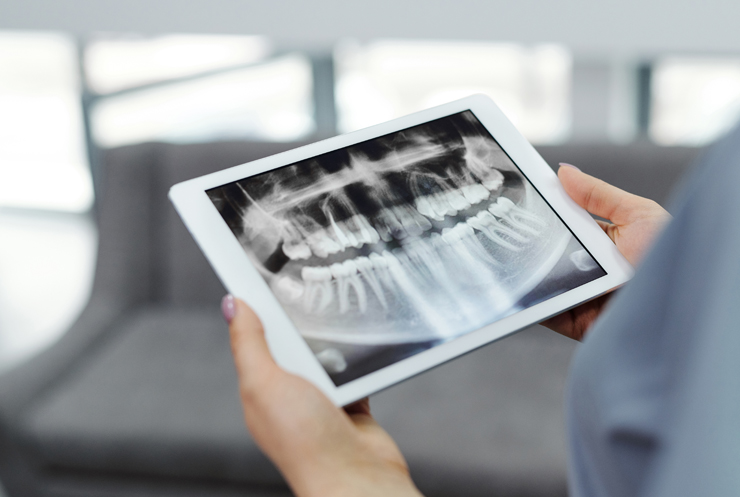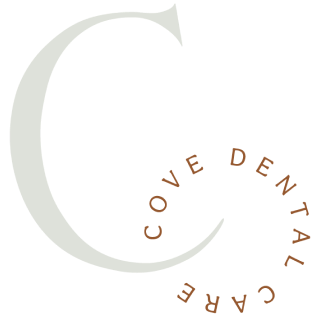Greer:

Dental X-Rays in Greenville, SC
Dental X-rays can sound like a scary experience indicative of something wrong with your mouth. In reality, dental X-rays are a regular part of basic dental maintenance that can help your dentist identify and treat minor oral health concerns before they progress into more serious ones. Dental X-rays in our Greenville, SC office are quick, painless, and, most importantly, safe for most people, including children. Before scheduling your next routine dental exam with the trusted Cove Dental Care team, you should know how dental X-rays could benefit your long-term oral health.
Dental X-rays are generally safe, as they use very low levels of radiation. However, pregnant women should inform their dentist before undergoing any X-rays, and lead aprons and thyroid collars may be used to protect the patient from unnecessary exposure.
What Do Dental X-Rays Show?
For children, dental X-rays help the dentist have a clear look at:
- The development of cavities
- Impacted teeth
- If wisdom teeth are present and/or moving
- If there is ample space available for permanent teeth to emerge properly
For adults, dental X-rays can show the dentist:
- The development and location of tooth decay
- Decay beneath dental work, such as fillings
- The progression of bone loss
- Abscesses and cysts
- Some oral cancers
- Changes in the root canal
What Are the Different Types of X-Rays?
Intraoral X-rays focus on the inside of the mouth. These include:
- Bitewing X-rays
- Periapical X-rays
- Occlusal X-rays
Extraoral X-rays are used to identify problems in a person’s jaw and skull. These include:
- Panoramic X-rays
- Tomograms
- Cephalometric projections
- Sialogram
- Digital imaging
- Cone beam CT
- MRI imaging
More About Dental X-Rays
Dental X-rays have transformed modern dentistry, unveiling hidden oral structures while upholding patient safety. These diagnostic tools offer essential insights for diagnosing and planning treatments for diverse oral concerns. Amid their valuable advantages, strict safety measures ensure the well-being of patients. This exploration delves into the significance of dental X-rays, their types, procedures, benefits, and the paramount role of safety.
Dental X-rays are indispensable in modern dentistry, revealing oral health nuances beyond visible examination. These images expose intricate details of teeth and bones, enabling accurate diagnoses, effective treatment plans, and disease monitoring. By transcending surface appearances, dental X-rays enhance patient care and treatment outcomes.
Dental X-rays encompass various types, each tailored to specific diagnostic purposes. Bitewing X-rays focus on tooth crowns, aiding in detecting cavities between teeth and assessing bone density. Periapical X-rays provide a comprehensive view of individual teeth, identifying infections, abnormalities, and potential issues. Panoramic X-rays offer an all-encompassing view of the oral cavity, aiding in assessing oral health landscapes and impacted teeth. Orthodontic X-rays focus on tooth and jaw alignment, aiding personalized orthodontic treatment strategies.
Dental X-ray procedures prioritize patient comfort and safety. Patients wear lead aprons for protection against radiation exposure. A sensor or film is placed in the mouth to capture images, and the X-ray machine is adjusted to capture desired views quickly. The captured images are processed for analysis by dental professionals.
Dental X-rays offer numerous advantages, contributing to comprehensive oral health management. They facilitate early issue detection, accurate diagnoses, tailored treatment plans, progress monitoring, and preventive care.
Patient safety is paramount in dental X-rays, with minimal radiation exposure and lead shielding measures. The ALARA principle guides radiation exposure limits, and X-ray protocols are personalized based on individual factors. Special precautions are taken for pregnant patients.
Dental X-rays stand as a crucial pillar in modern dentistry, enhancing patient care and diagnoses. While offering vital insights, stringent safety measures are in place to minimize risks. Through advanced technology, lead shielding, appropriate usage, individualized approaches, and adherence to safety guidelines, dental professionals ensure the benefits of X-rays while prioritizing patient well-being. In oral health care, dental X-rays illuminate effective diagnoses, treatments, and long-term preservation, all within strict safety protocols.
